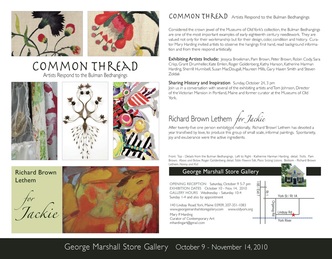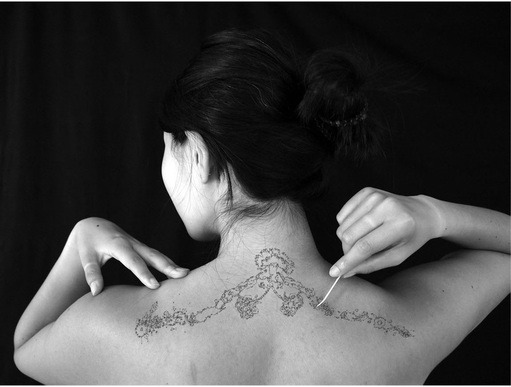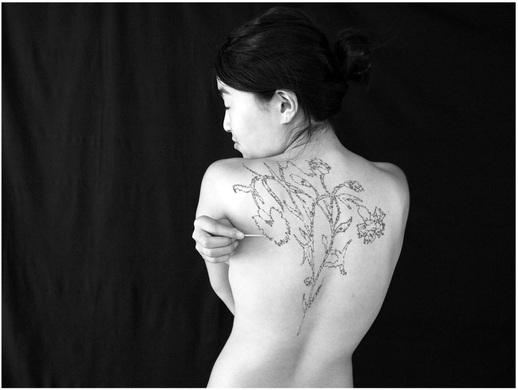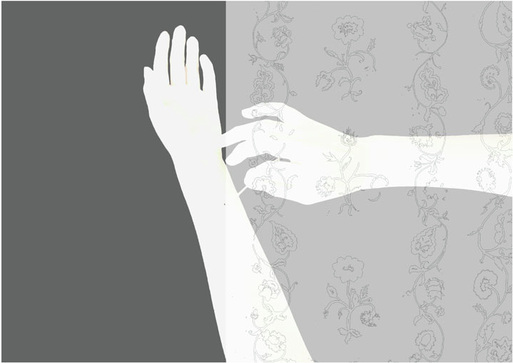My Artist Statement for Common Thread
Mary Bulman, circa 2010
Digging, scraping away to find a metaphor to reveal the heart of emotion, drives my work. And lately that emotion has been loss, as my family shipped out, boys moving to the west coast, and a daughter literally at sea. So this project, Common Thread, Interpreting the Bulman Bed Hangings, was just meant for me.
When Mary Bulman’s husband marched with his regiment in 1745, legend has it she began this luscious version of her private Eden. My version of this story is that it is dark, and she is cold, sad, swept up in religious fervor, confused by lust. A few friends work with her during the day, but she is mostly alone in her work. The vines that she stitched, throughout the long, candlelit nights entwine her. She succumbs to the longing. She works Issac Watt’s poem into the valances “I’ll carve our passion on the bark, And every wounded tree, Shall drop and bear some mystic mark, That Jesus dy’d for me”.
I don’t imagine she was talking about Jesus.
My response to this work was immediate and visceral. My question was what would Mary do …today? The answer to this came to me gradually. It came to me as I watched a movie in which a woman says to her lover after waking from a nightmare “I had such pain from seeing you [with another woman] I started to stick pins under my fingernails to stop the pain in my heart”. It presented itself slowly, all dim at first like the light. I imagined the silhouettes of the 1700’s and began by working with the words–seeking a visual metaphor: stitch, needle, incise, carve. It came to me as I stood in line at the bakery behind a young woman who proudly displayed the most glorious tattoo across her shoulder and down her arm.
These are photographic prints, which seemed the obvious medium for this work. The photograph is believed to have power to reveal the soul. I have attempted to reveal Mary Bulman’s soul, circa 2010.
Susan MacDougall
York Harbor, Maine, 2010
Digging, scraping away to find a metaphor to reveal the heart of emotion, drives my work. And lately that emotion has been loss, as my family shipped out, boys moving to the west coast, and a daughter literally at sea. So this project, Common Thread, Interpreting the Bulman Bed Hangings, was just meant for me.
When Mary Bulman’s husband marched with his regiment in 1745, legend has it she began this luscious version of her private Eden. My version of this story is that it is dark, and she is cold, sad, swept up in religious fervor, confused by lust. A few friends work with her during the day, but she is mostly alone in her work. The vines that she stitched, throughout the long, candlelit nights entwine her. She succumbs to the longing. She works Issac Watt’s poem into the valances “I’ll carve our passion on the bark, And every wounded tree, Shall drop and bear some mystic mark, That Jesus dy’d for me”.
I don’t imagine she was talking about Jesus.
My response to this work was immediate and visceral. My question was what would Mary do …today? The answer to this came to me gradually. It came to me as I watched a movie in which a woman says to her lover after waking from a nightmare “I had such pain from seeing you [with another woman] I started to stick pins under my fingernails to stop the pain in my heart”. It presented itself slowly, all dim at first like the light. I imagined the silhouettes of the 1700’s and began by working with the words–seeking a visual metaphor: stitch, needle, incise, carve. It came to me as I stood in line at the bakery behind a young woman who proudly displayed the most glorious tattoo across her shoulder and down her arm.
These are photographic prints, which seemed the obvious medium for this work. The photograph is believed to have power to reveal the soul. I have attempted to reveal Mary Bulman’s soul, circa 2010.
Susan MacDougall
York Harbor, Maine, 2010
All Content © 2010 Susan MacDougall






